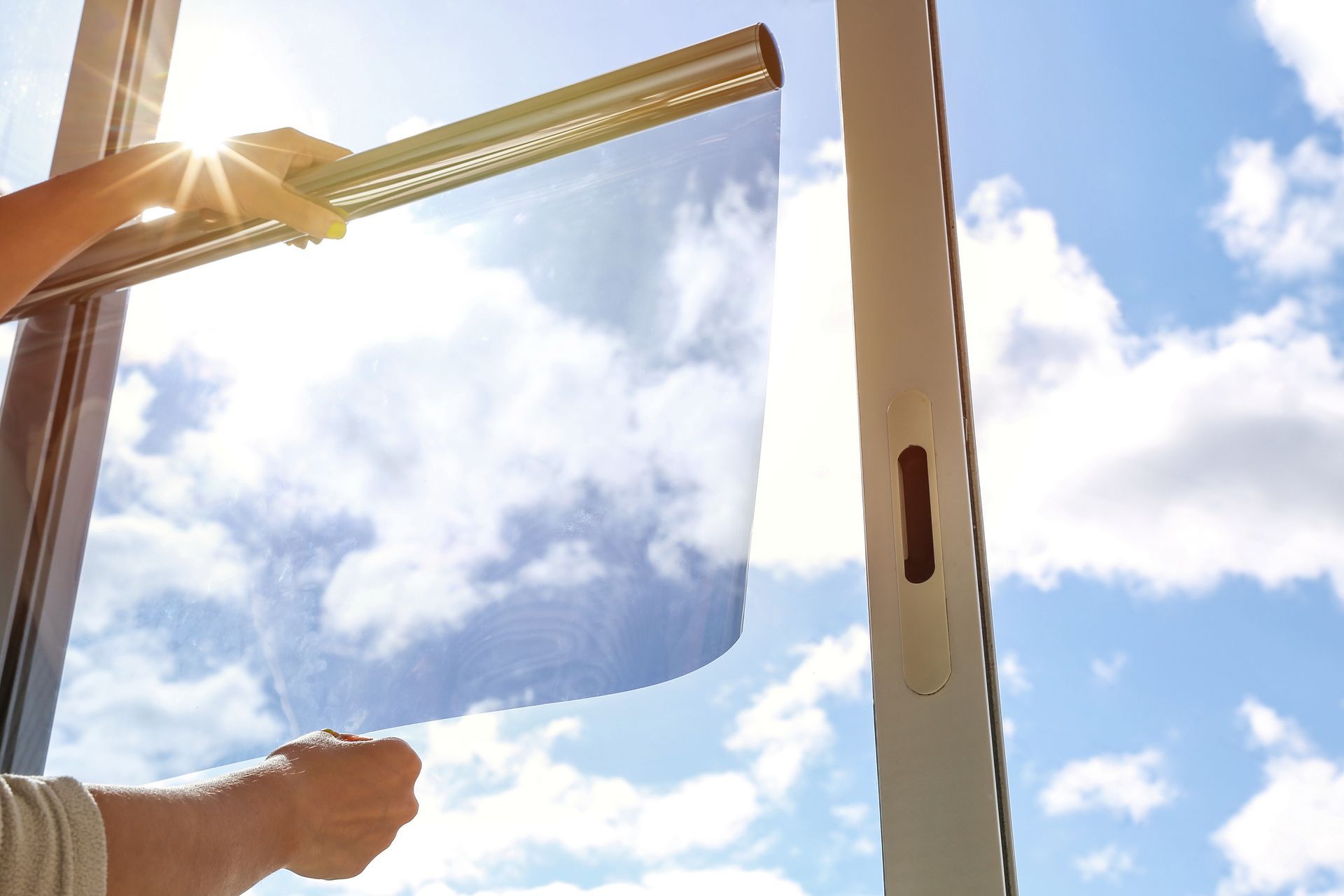
By Brian Fairbrother
•
December 24, 2023
I ntroduction : Window tinting is a popular choice for those seeking privacy, UV protection, and a sleek aesthetic for their vehicles or homes. However, circumstances change, and you may find yourself wondering: Can window tint be removed? In this blog post, we'll explore the ins and outs of window tint removal and what you need to know before deciding to unveil your windows. Understanding Window Tint Adhesives: Window tint is typically applied with an adhesive that bonds the tint film to the glass surface. The adhesive ensures a secure fit and long-lasting tinting effect. While this adhesion is crucial for the tint's effectiveness, it also makes the removal process a bit more intricate. DIY vs. Professional Removal: The internet is filled with DIY methods for removing window tint, from using soapy water to hairdryers. However, the effectiveness of these methods can vary, and improper removal may damage the glass or leave adhesive residue behind. For a safe and clean removal, it's often advisable to seek professional services. Professional Window Tint Removal Process: Professional tint removal involves skilled techniques to ensure a clean and efficient process. Here's an overview of the typical steps: Assessment: Professionals assess the current condition of the window tint and the adhesive to determine the best removal approach. Heating: Heat is applied to the tinted area, softening the adhesive and making it easier to peel off the film. Peeling: The tint film is carefully peeled away from the glass surface, taking care not to damage the glass. Adhesive Removal: Any remaining adhesive is removed using specialized solutions, ensuring a clear and pristine glass surface. Cleaning: The glass is thoroughly cleaned to remove any residue, leaving a spotless finish. Considerations Before Tint Removal: Legal Restrictions: Check local regulations regarding window tint darkness. Some areas have specific limits on how much tint can be applied to certain windows. Age and Condition: Older tint films may have become brittle or discolored, making removal more challenging. Professionals can assess the condition and advise on the best course of action. Vehicle or Property Ownership: If the window tint was applied by a previous owner, consider consulting with a professional for removal to ensure a thorough and safe process. Conclusion: In conclusion, yes, window tint can be removed, and the process is best entrusted to professionals to ensure a smooth and damage-free result. Whether you're looking to update your style, comply with regulations, or address issues with aging tint, a professional removal service ensures clarity without compromise. When in doubt, consult with experienced tinting professionals who can guide you through the removal process, providing a transparent view for the road ahead.

By Brian Fairbrother
•
December 24, 2023
Introduction: Window tinting has become a popular choice for vehicle owners and homeowners alike, offering benefits such as enhanced privacy, reduced glare, and a sleek aesthetic. However, one of the key questions that often arises is whether window tint effectively blocks harmful UV (ultraviolet) light. In this blog post, we'll explore the science behind window tinting and its impact on UV light. Understanding UV Light: Before delving into the role of window tint, let's briefly understand UV light. Ultraviolet rays, classified into UVA, UVB, and UVC, are part of the sun's spectrum. While UVC is mostly absorbed by the Earth's atmosphere, UVA and UVB can penetrate, posing potential health risks, including skin damage and premature aging. The Basics of Window Tint: Window tint is a thin, multi-layered film applied to windows to reduce the amount of visible light, heat, and glare that enters a space. Tinting films typically consist of polyester layers infused with metals or dyes to achieve the desired shading effect. Does Window Tint Block UV Light? Yes, the majority of quality window tint films are designed to block a significant portion of UV rays. The effectiveness depends on the type of film used and its specifications. High-quality films can block up to 99% of harmful UV rays, providing a valuable layer of protection for occupants inside vehicles or buildings. Benefits of UV Protection: Skin Protection: Blocking UV rays helps prevent skin damage and reduces the risk of skin cancer. This is particularly crucial for individuals who spend extended periods in vehicles or homes with large windows. Interior Preservation: UV rays can cause fading and damage to furniture, flooring, and upholstery. Window tint acts as a shield, preserving the interior aesthetics and extending the lifespan of valuables. Health and Comfort: Reduced UV exposure contributes to a healthier and more comfortable environment. It minimizes the risk of sunburn and allows for a cooler, more enjoyable indoor or driving experience. Choosing the Right Window Tint: When considering window tint for UV protection, opt for films labeled as "UV-blocking" or "UV-resistant." Consult with a professional tinting service to ensure you select the right film for your specific needs. Conclusion: In conclusion, quality window tint does indeed block UV light, offering numerous benefits beyond aesthetics. Whether you're cruising in your car or enjoying the comfort of your home, investing in UV-resistant window tint can contribute to a safer, more comfortable, and well-protected environment. Remember, when it comes to window tinting, always consult with professionals to ensure the right product and installation for optimal results. Stay shaded, stay protected!
Want more information?
Latest news

By Brian Fairbrother
•
December 24, 2023
I ntroduction : Window tinting is a popular choice for those seeking privacy, UV protection, and a sleek aesthetic for their vehicles or homes. However, circumstances change, and you may find yourself wondering: Can window tint be removed? In this blog post, we'll explore the ins and outs of window tint removal and what you need to know before deciding to unveil your windows. Understanding Window Tint Adhesives: Window tint is typically applied with an adhesive that bonds the tint film to the glass surface. The adhesive ensures a secure fit and long-lasting tinting effect. While this adhesion is crucial for the tint's effectiveness, it also makes the removal process a bit more intricate. DIY vs. Professional Removal: The internet is filled with DIY methods for removing window tint, from using soapy water to hairdryers. However, the effectiveness of these methods can vary, and improper removal may damage the glass or leave adhesive residue behind. For a safe and clean removal, it's often advisable to seek professional services. Professional Window Tint Removal Process: Professional tint removal involves skilled techniques to ensure a clean and efficient process. Here's an overview of the typical steps: Assessment: Professionals assess the current condition of the window tint and the adhesive to determine the best removal approach. Heating: Heat is applied to the tinted area, softening the adhesive and making it easier to peel off the film. Peeling: The tint film is carefully peeled away from the glass surface, taking care not to damage the glass. Adhesive Removal: Any remaining adhesive is removed using specialized solutions, ensuring a clear and pristine glass surface. Cleaning: The glass is thoroughly cleaned to remove any residue, leaving a spotless finish. Considerations Before Tint Removal: Legal Restrictions: Check local regulations regarding window tint darkness. Some areas have specific limits on how much tint can be applied to certain windows. Age and Condition: Older tint films may have become brittle or discolored, making removal more challenging. Professionals can assess the condition and advise on the best course of action. Vehicle or Property Ownership: If the window tint was applied by a previous owner, consider consulting with a professional for removal to ensure a thorough and safe process. Conclusion: In conclusion, yes, window tint can be removed, and the process is best entrusted to professionals to ensure a smooth and damage-free result. Whether you're looking to update your style, comply with regulations, or address issues with aging tint, a professional removal service ensures clarity without compromise. When in doubt, consult with experienced tinting professionals who can guide you through the removal process, providing a transparent view for the road ahead.

By Brian Fairbrother
•
December 24, 2023
Introduction: Window tinting has become a popular choice for vehicle owners and homeowners alike, offering benefits such as enhanced privacy, reduced glare, and a sleek aesthetic. However, one of the key questions that often arises is whether window tint effectively blocks harmful UV (ultraviolet) light. In this blog post, we'll explore the science behind window tinting and its impact on UV light. Understanding UV Light: Before delving into the role of window tint, let's briefly understand UV light. Ultraviolet rays, classified into UVA, UVB, and UVC, are part of the sun's spectrum. While UVC is mostly absorbed by the Earth's atmosphere, UVA and UVB can penetrate, posing potential health risks, including skin damage and premature aging. The Basics of Window Tint: Window tint is a thin, multi-layered film applied to windows to reduce the amount of visible light, heat, and glare that enters a space. Tinting films typically consist of polyester layers infused with metals or dyes to achieve the desired shading effect. Does Window Tint Block UV Light? Yes, the majority of quality window tint films are designed to block a significant portion of UV rays. The effectiveness depends on the type of film used and its specifications. High-quality films can block up to 99% of harmful UV rays, providing a valuable layer of protection for occupants inside vehicles or buildings. Benefits of UV Protection: Skin Protection: Blocking UV rays helps prevent skin damage and reduces the risk of skin cancer. This is particularly crucial for individuals who spend extended periods in vehicles or homes with large windows. Interior Preservation: UV rays can cause fading and damage to furniture, flooring, and upholstery. Window tint acts as a shield, preserving the interior aesthetics and extending the lifespan of valuables. Health and Comfort: Reduced UV exposure contributes to a healthier and more comfortable environment. It minimizes the risk of sunburn and allows for a cooler, more enjoyable indoor or driving experience. Choosing the Right Window Tint: When considering window tint for UV protection, opt for films labeled as "UV-blocking" or "UV-resistant." Consult with a professional tinting service to ensure you select the right film for your specific needs. Conclusion: In conclusion, quality window tint does indeed block UV light, offering numerous benefits beyond aesthetics. Whether you're cruising in your car or enjoying the comfort of your home, investing in UV-resistant window tint can contribute to a safer, more comfortable, and well-protected environment. Remember, when it comes to window tinting, always consult with professionals to ensure the right product and installation for optimal results. Stay shaded, stay protected!




